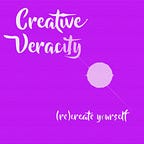Koan Kreativity VIII
Using Ancient Wisdom to Inspire Modern Creativity
Presented as either a riddle or tale, the koan is instrumental to the Zen student’s path to enlightenment; by opening and freeing the mind from both outer and inner restrictions, the “empty mind” of the Zen student is more open to insight and realization that could be achieved in no other way.
As artists and creative people we, too, need the benefit of an “empty mind.” Our own creative insights and realizations become more tangible and workable when we clear away the clutter of fear, apathy, negativity, and all other potentially destructive restrictions that we may have learned in our lives.
__________
The First Principle
When one goes to Obaku temple in Kyoto, she or he sees carved over the gate the words: “The First Principle.” The letters are unusually large, and those who appreciate calligraphy always admire them as a masterpiece. They were drawn by Kosen over two hundred years ago.
When the master drew them he did so on paper, from which the workmen make the large carving in wood. As Kosen sketched the letters, a bold pupil was with him who had made several gallons of ink for the calligraphy, and who never failed to criticize his master’s work.
“That is not good,” he told Kosen after his first effort.
“How is this one?”
“Poor. Worse than before,” pronounced the pupil.
Kosen patiently wrote one sheet after another until eighty-four First Principles had accumulated, still without the approval of the pupil. Then, when the young man stepped outside for a few moments, Kosen thought: “Now this is my chance to escape his keen eye.” He wrote hurriedly, with a mind free from distraction:
“The First Principle.”
A masterpiece, pronounced the pupil.
* * *
As artists and creative people, we may be unnerved by criticism. Others may not understand what we’re trying to accomplish with our work. Our voices of negativity and doubt can wreak havoc in our artistic lives by damning our efforts before we even begin, thus belittling our ambitions.
The First Principle — a koan about freeing our minds from distraction — is invaluable to read and understand. In it, we find Kosen wrestling with a “bold pupil” (who may or may not be an actual person). Regardless of the outer or inner criticism that Kosen experienced, he found a way to complete his work.
Like Kosen, we’re tasked with completing our own masterpieces. It may take us 85 times (or more) to get it “right,” but each experience draws us into the next by enhancing our dexterity, understanding, and steadfastness.
Even more importantly, we’re tasked with dealing with the criticisms that inevitably accompany our creative undertakings. Our ability to maintain “a mind free from distraction” is key to our own artistic and creative commitment and survival, while maintaining a reliance on ourselves as worthy and gifted inheritors of whatever our Muse may bequest us.
